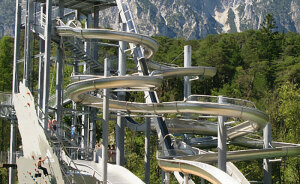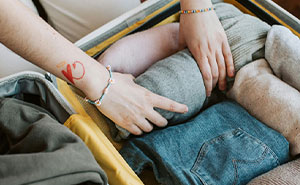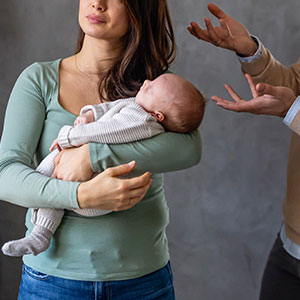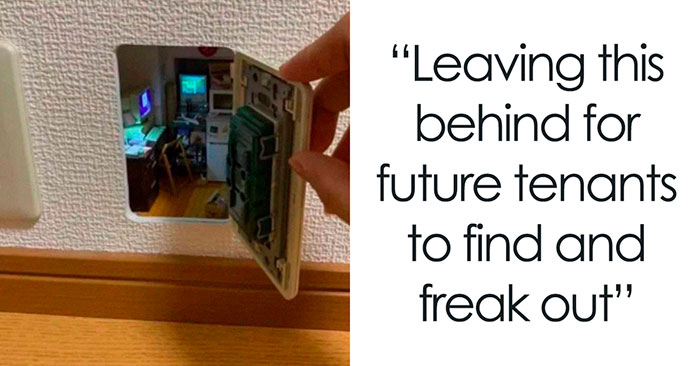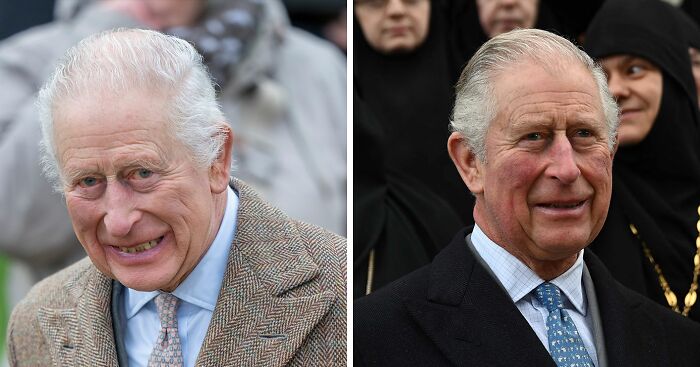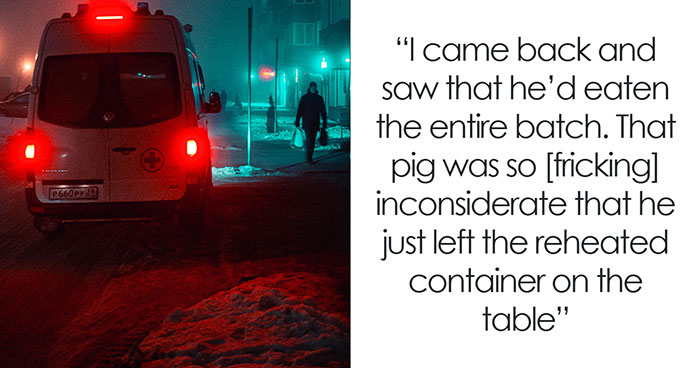The Victorian Era was a time of the Industrial Revolution, with authors Charles Dickens and Charles Darwin, the railway and shipping booms, profound scientific discoveries, and the invention of the telephone and telegraph.
However, the 63-year period from 1837 to 1901 (marked by the reign of Queen Victoria) also saw significant challenges in rural life as cities and slums were rapidly expanding, long and regimented factory hours for many workers, Jack the Ripper, and the Crimean War.
Capturing all the progress and turmoil of the epoch, the subreddit Random Victorian Stuff offers a gallery of interesting images, facts, and stories not just from Britain, but from the entire world!
This post may include affiliate links.
Benedicte Wrensted Photographed Captain Willie, From The Shoshone Bannock Tribe Of The Fort Hall Reservation, At Her Studio On Main Street In Pocatello, Idaho, Ca. 1900
Portrait Of A Young Woman With Books, Ca. 1890
While things like race, religion, and occupation were all meaningful aspects of personal identity and status, the main organizing principles of Victorian society were gender and class.
Victorian gender ideology was based on the “doctrine of separate spheres,” which stated that men and women were different and meant for different things. Men were physically strong and women were weak. Men needed sex and women needed to reproduce. Men were independent, while women were dependent. Men belonged in the public sphere, while women belonged at home. Men were meant to participate in politics and in paid work, while women had to raise families.
While most working-class families could not live out the doctrine of separate spheres because they could not survive on a single male wage, the ideology was influential across all social classes.
Portrait Of A Queensland Woman, 1884
A Family Photo, Circa 1890
American Aviator Matilde Moisant, 1912. She Was The Second Woman In The United States To Get A Pilot's License
She only kept her licence for less than a year-she crashed a few months after getting her certificate, and whilst she was recovering, her best friend (who had been the first woman pilot in USA) crashed and died. Although Moisant recovered, she never flew again.
The working class made up about 70 to 80 percent of the population and got their income from wages, with families usually earning under £100 per year.
The middle class, which got its income (of £100 to £1,000 per year) from salaries and profit, grew rapidly during the 19th century, from 15 to over 25 percent of the population. During the 19th century, members of the middle class were the moral leaders of society and even achieved some political power.
The very small and very wealthy upper class got its income (of £1,000 per year and often much more) from property, rent, and interest. The upper class had titles and wealth, and owned most of the land in Britain while controlling the local, national, and imperial politics.
Just Straight Up Rock Climbing Up A Mountain In Dress And Heel Boots Because Why Not. Victorian Women Managing A Hard Route, 1890s
Very Elegant Looking Woman In A White Dress, Circa 1890s. Looks Like Studio Photo
Estudio Photo Of A Woman In The Late 1890s. Maybe Early 1900s
Postcard, Ca 1900
With the earliest phases of industrialization over by around 1840, the British economy expanded, and it became the richest country in the world. However, many people worked long hours in harsh conditions.
Overall, standards of living were rising. While the 1840s were a bad time for workers and the poor—the decade was dubbed “the hungry forties”—the trend was toward a less precarious life.
Most families not only had a home and enough to eat but also had something left over for alcohol, tobacco, and even vacations to the countryside or the seaside.
Photograph Of Aino Sibelius, The Wife Of Finnish Composer Jean Sibelius. Circa 1891
Portrait Of A Family In Gainesville, Florida, Early 1900s
Four Generations, Ca. 1905
Ella Williams, Born In 1865 Worked On Her Adult Life As "Giant" For A Number Of Shows And Companies (Barnum One Of Them) In The Late 1890s
Despite being billed a 2.28m, she was more in the lines of 2.08m, but this was solved with heels and some hats.
Relative prosperity meant that Britain was a nation not only of shopkeepers but of shoppers, with the rise of the department store from mid-century transforming the shopping experience.
Increased wealth, including higher real wages from the 1870s, meant that even working-class people could purchase discretionary items, and mass production made clothes, souvenirs, and newspapers affordable to almost everyone.
Woman In A Crocheted Shirtwaist, Early 1900s
Photo Of A Mongolian Woman In Her Traditional Clothes, Circa Early 1900s. Not Colorized, Autochrome Lumiere
Holly And Her Cat, 1902
Kenyan Woman With Her Pet Deer. 1909
That is not a deer. I agree it does look like it could be a chevrotain, but given that it is Kenya, it is more likely a dik-dik.
During the Victorian era, Britain was the cultural capital of the English-speaking world, including the United States, Canada, Australia, and New Zealand. Victorian performance and print culture were rich and varied.
Theatre thrived, but even more popular were music halls, which featured varied programs of singing, dancing, sketches, and other performances; these emerged in the 1850s, and by the 1870s there were hundreds across Britain, some seating thousands of people.
Group Portrait Of Native American (Crow) Men, One Woman. And A Child In Front Of A Tepee In Colorado, 1880
Group Of Women Dressed In 3 Piece Suits With Different Styles....like Best The One In The Right Is The Best Fit And Looks Like Something She Asked Either To Be Done To Fit Or Bespoke For Her. Circa 1896
Actress Maude Ewing Adams Kiskadden, Dressed In A 3 Piece Suit, 1890s
Maude Fealy (Born Maude Mary Hawk; March 4, 1883 – November 9, 1971) Was An American Stage And Silent Film Actress Whose Career Survived Into The Sound Era
Print culture was also big and diverse, supported by high literacy rates for the time.
There were hundreds of magazines and newspapers available at increasingly cheaper prices. The 1880s saw the emergence of New Journalism, which drew in readers with pieces on violent crime and scandals in high society.
Novels were also popular. By the mid-century, Britons of all classes could afford and read novels. Some were aimed at highly educated and well-off people while others were published for the less-educated readers looking for appealing and exciting stories. Victorian novels were often quite long, with complicated plots (often centered on marriages) and many characters.
Union Soldier With His Family Posing In A Photo. Wife And 2 Daughters. Circa 1860s
A Woman From Luzon, An Island In Northern Philippines, 1875. Photo Taken By Francisco Van Camp
Woman Poses In What I Think Is A Riding Outfit. Like The Double Breastes Low Cut Jacket. Late Xix Century
Appears To Have Been A Private Photo Of To Women Really Going For It. You Can See The Blurr Of How Fast It Was, Like Something Thought At The Moment. Looks Early 1900s
However, not everyone lived long enough to experience all of these pleasures. Life expectancy at birth for the average Victorian was about 42, and more than 25 percent of children died before their fifth birthday.
Until 1842, when new laws were introduced which prevented children under 10 from working underground, children made up 25 per cent of the workforce in mines, factories, and workshops. Infants as young as four could be found holding open ventilator doors for coal wagons to pass through, usually pushed by other children. They would also crawl beneath moving machines to clean and tidy. It's no surprise that accidents were so common.
Three Women From Guadeloupe, On Ellis Island, About 1910, Photograph By Augustus Sherman
Vassar College (Seven Sisters College), 1895. Class Day On The Lawn
Small Moment Freeze In Time Of This Couple By The Window, Early 1900s
Tintype Of A Man With His Pet Squirrel (Circa Mid-19th C.)
Women Mountaniers As Well As Men, Crossing Over Glaciers In Switzeland. Love The Casual Umbrellas. Early 1900s
Mourning Mask And Dress Used By Empress Elisabeth Of Austria In 1889 After Her Son Rudolf Took His Own Life
The Mask Is Made Of Black Velvet With Lace Trim And Ostrich Feathers; Dress Is Made Also Of Velvet With Jet Black Glass Beads. Whole Thing Designed By Fanni Scheiner.
Woman From Peru In A Nice Dress, Circa 1860s. The Dress Appears To Be Made Of Cotton With Black Lace
Small Part Of A Photobooth Strip Of A Couple Of Women, By The Hair I Say Circa 1890s
Paleontologist Thomas Huxley, Who Discovered That Birds Were Descended From Dinosaurs. 1846
Watching The Eclipse, 1912 (Edwardian Photograph)
Portrait Of An Unidentified Young Girl With Spectacles, 1890s
Marie Bell Watson, 1902. Little Is Known About This Woman Except That She Died In Junction City, Kansas On May 23, 1913 Of "Consumption." She Was 34 At The Time Of Her Death
Victorian Lady With A Very Dominant Glare Looks Straight To The Camera, I Thin By The Ringlets, Is Mid Xix Century, Maybe 1860s?
Young Woman On Her Roller Skates, Circa Early 1900s
This Picture Was Taken 137 Years Ago In Nebraska
Of course they’d acquired generations of agricultural knowledge, but post-Emancipation in the South offered scarcely better prospects than before. So many moved onto the Plains where they were dubbed “Exo-dusters.”
Portrait Of A Woman With Exceptionally Long Hair From 1890s
Her hair is gorgeous but it would have taken hours to wash, dry, and brush or comb.
Autochrome Lumiere Shot Of A Women In Tall Grass. Circa Early 1900s
Group Portrait - Ireland, 1857
There is a chance the woman in the center is actually dead.
Margery Bish Hanging Dolls Clothes On A Clothesline, C. 1895. Taken By Her Father
Portrait Of A Woman In White, Ca. 1910
Harem Woman From The Maharaja Of Jaipur, Ram Singh II. The Woman Is Dressed In Silks, Gold, Gold Fibers Practically Everywere. Photo Circa 1857
Suffragette Frances Willard (1839–1898) Learning To Ride A Bike At 53 Years Old For The First Time With The Help Of Friends. She Even Wrote A Book About It
This is so cool. Before the bicycle, the only ways to get around were to walk or use a horse/car, and horses and cars were really expensive. When the bicycle came around, women could suddenly travel around by themselves!! It was an enormous symbol of female independence. Unsurprising that a suffragette would want to learn to ride one, even in her fifties!
Portrait Of A Woman Suffering From Syphilis
Syphilis Was Viewed As Symbolic Of A Wider Ongoing Moral Crisis. One That Was Closely Associated With Another Great ‘Social Evil’ – P**********n. The Two Were Certainly Linked, But Any Public Blame For The Spread Of Syphilis Tended To Be One-Sided.
It must have been such a miserable existance for this woman. Pain, a lingering death, and moral judgements. Many made by men, who were either lucky, or hadn't yet begun to exhibit symptoms.
Portrait Of A Barmaid In Texas, 1885 (Certainly Not The Hollywood Depiction Of What A Saloon Girl Looked Like)
Alice Liddell (Of Alice In Wonderland Fame), At Age 18. Photo Taken By Lewis Carroll
It always surprises (and pleases) me how many photos of black people there are that aren't just curiosities or exhibits. It shows that they were much more integrated than we were perhaps brought up to believe (or some would have us believe now).
Noting an apparent theme in this post, how do you manage to keep the word "women" out of both title and description?
I suggest you look again. The headings above many of the photos do have the word Woman or Women in them.
Load More Replies...It always surprises (and pleases) me how many photos of black people there are that aren't just curiosities or exhibits. It shows that they were much more integrated than we were perhaps brought up to believe (or some would have us believe now).
Noting an apparent theme in this post, how do you manage to keep the word "women" out of both title and description?
I suggest you look again. The headings above many of the photos do have the word Woman or Women in them.
Load More Replies...
 Dark Mode
Dark Mode 

 No fees, cancel anytime
No fees, cancel anytime 




















































